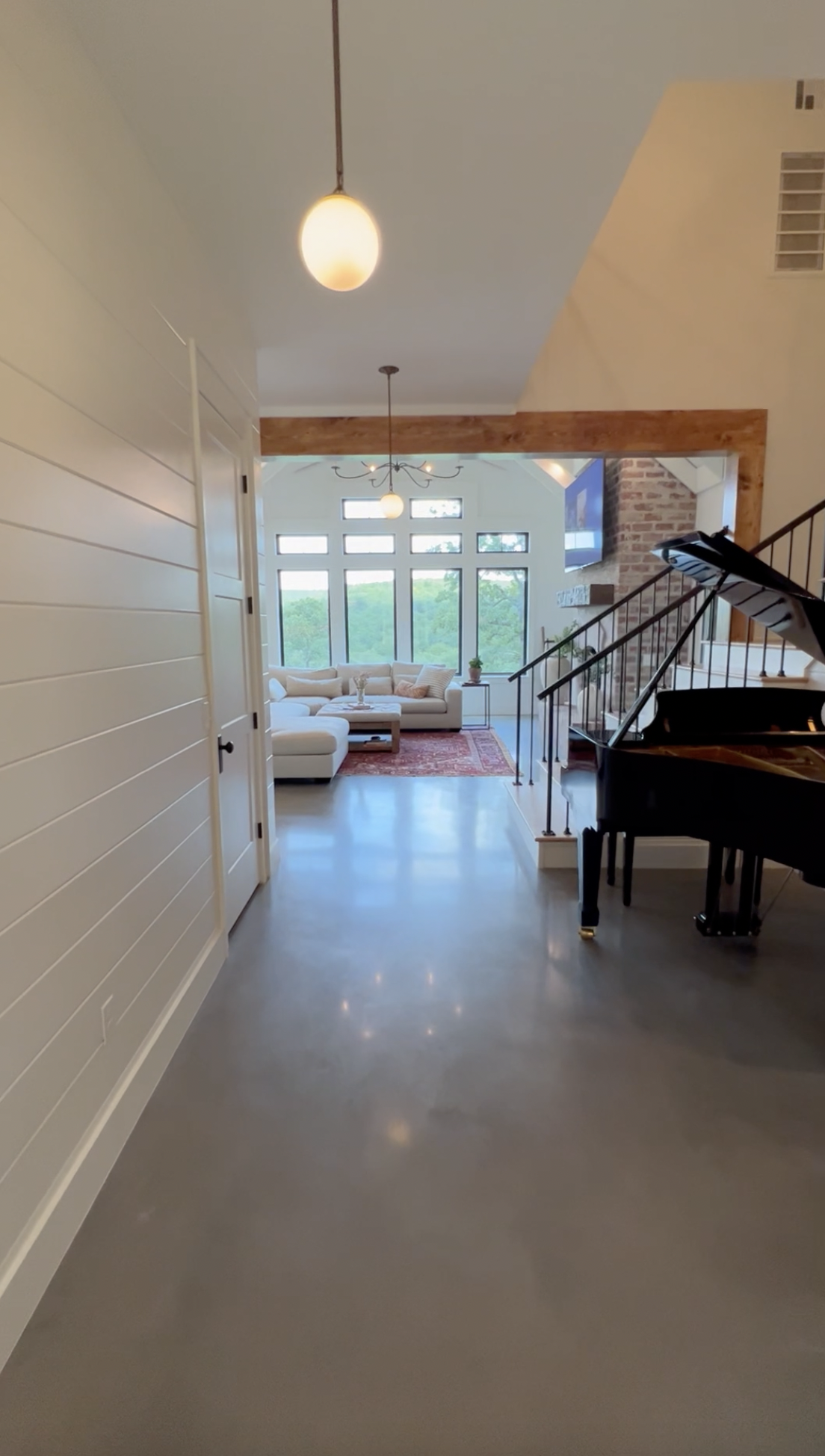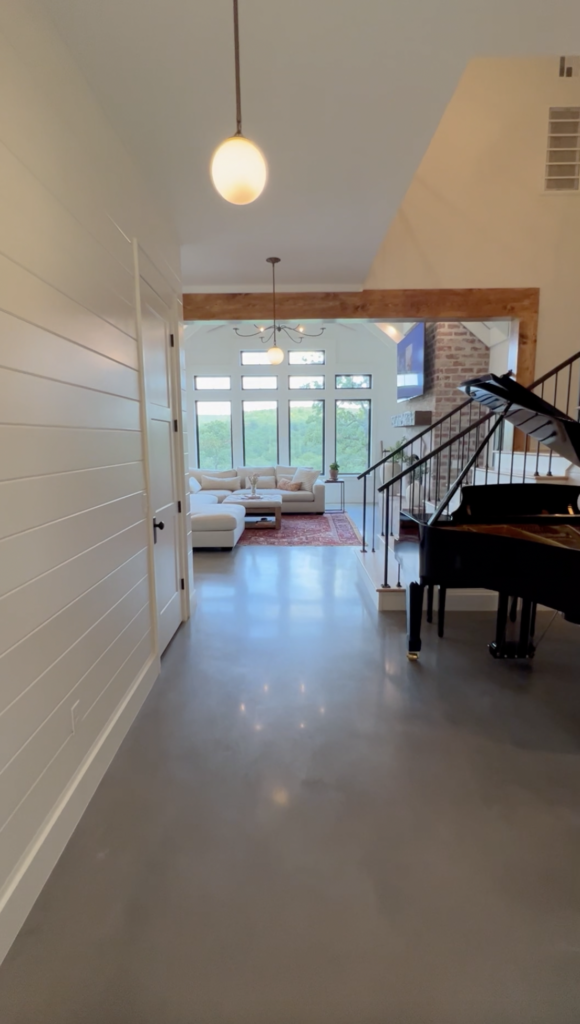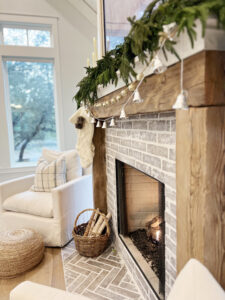
Choose the Right Flooring For Your Build
Flooring can be one of the most daunting and overwhelming choices to make when building your dream home. There are so many different factors to consider when putting flooring in a room, and you want to be sure to make the right choices for your family!
Thankfully, we’ve been in the homebuilding business long enough to offer advice on how to make these sorts of decisions. No matter where you live, what you like, or what your budget is, we can help you make a smart, informed decision about what kind of floors to put in your home.
In this blog, we’ll explore different ways for you to decide what kinds of flooring are right for you, your flooring options, and their pros and cons. Read on for our two cents on how to choose the right floors for your dream build!
Questions to Ask Yourself
First, you have to figure out what your priorities are when choosing flooring for your home. We’ve put together a few questions that we believe will help you narrow down your options!
Most likely, you won’t want to choose the same type of floor for every room in the house, so you can use these questions on a room-by-room basis to help you narrow down what types of flooring belong in each space.
1. How much wear and tear can our floors take?
Some types of flooring are more resistant to staining, scratching, and other forms of wear and tear. If you have children, pets, or both, you’ll want to consider how resistant your floors are to chaos!
For example, we have engineered hardwood in almost every single room in the house. In the kids’ bedrooms upstairs, though, we used luxury vinyl planks (LVP) because it can withstand more wear and tear and they were easy for us to install ourselves (which saved us even more money). This was a simple way we found to stay within our budget while still making decisions that made sense for our family.
If you want your flooring to be continuous throughout the living spaces and not have to change from one type to another between the living and kitchen then you may want to consider options other than hardwood, which can be damaged and buckle in wet areas. In open concept homes, having one continuous floor makes the home flow better and feel larger. Changing floor types at bathroom thresholds is fine.
2. What’s our budget for flooring?
The price of flooring depends a lot on the material and the quality. Personally, I believe in using natural materials whenever possible; however, this means I had to make room in our budget for high-quality flooring in the rooms where it mattered most to me!
Going back to our use of LVP in the kids’ bedrooms, choices like this allowed us to have flooring we love in the common living spaces. Quite frankly, our kids care MUCH less about flooring than I do, so it was an easy decision to opt for something cheaper yet waterproof in their spaces. By making intentional decisions based around our budget and preferences, we were able to spend more where it mattered most to us!
For help deciding how much of your budget should go towards flooring, our Bootstrap Builders Program is perfect for you. This plan will provide you with all the resources you need for a successful home build while walking you through every step of the process!
3. How can my flooring choices affect my family’s health?
Believe it or not, your flooring choices can affect your family’s health. Certain floors are harder to clean than others; while carpet can add a cozy feel to a room, it can also hold on to dust, pet hair, and other debris more than other types of flooring.
If someone in your family suffers from severe allergies, asthma, or even if you simply don’t want to deal with the hassle of cleaning carpet, then you might opt out of carpeted rooms. For rooms where you want the warmth of carpet flooring but don’t want the stuffy nose, choose an easily washable rug instead to add a pop of color and an element of coziness!
4. What’s the climate like where we live?
Have you ever thought about how the climate in your area can affect your flooring? It might seem silly, but you should DEFINITELY consider what the weather is like where you live.
For example, if you live in a cooler climate, carpet can help keep your rooms warm in the harsh winter months. In contrast, you’ll want to be weary of floors that could warp (hardwood) or generate more heat (carpet) in warm, humid climates.
Spending some time to think about how your flooring will react to the weather where you live can help your family stay happy and healthy with less effort in the long run.
5. Who will install your floors?
One of the great things about building your own home is that you get to do as much or as little as you want! On one hand, if you install your own flooring, you’ll save money but it will probably take you a considerable amount of time, depending on the flooring. On the other hand, if you hire a subcontractor, you save yourself time and effort, but it’ll cost you a little more money.
During our build, we felt comfortable installing luxury vinyl planks and tile; everything else, we left to the professionals. In my experience, all other types of flooring are more complex and harder to install, so it was worth it for us to hire subcontractors for most of our build.
Types of Flooring
There are multiple different types of flooring that you could include in your build. Each type of flooring has its pros and cons; depending on your answers to the questions above, something that works for someone else might not be the best option for you and your family.
It’s important for you to be knowledgeable about the decisions you’ll have to make regarding your build. We want to make sure you have the information you need to choose flooring for your home, so read on to learn about your different flooring options!
Stained Concrete

Stained concrete flooring is a durable and low-maintenance option that can add a modern, industrial look to your home.
Stained concrete flooring is a durable and low-maintenance option that can add a modern, industrial look to your home. It’s also incredibly easy to clean and maintain, which makes it a good choice for high-traffic areas, such as entryways.
However, stained concrete can be cold, both literally and aesthetically! Avoid using stained concrete if you live in a cooler climate, or if you want to add a warm, cozy feel to your rooms. I personally want my home to be an inviting place for my family and visitors alike, so I tend to avoid stained concrete. Additionally, the installation can be a bit of a messy process, so be prepared to do some heavy-duty cleaning up if you choose this route.
Tile
Tile flooring is a classic choice that offers a vast array of materials, colors, and patterns, so you can really use it to spruce up a room aesthetically. It’s highly durable, water-resistant, and easy to clean!
However, tile floors can be cold and uncomfortable to walk on. While tile is the ideal option for bathrooms, laundry rooms, and kitchens, we probably wouldn’t recommend using it in any other rooms in your home.
Luxury Vinyl Plank (LVP)
Luxury Vinyl Plank (LVP) flooring is a popular and affordable alternative to hardwood floors because it is highly durable, water-resistant, and easy to maintain, making it a practical choice for any room in your home. LVP can also provide a wide range of design options.
While LVP does mimic more expensive hardwood or tile options, it definitely does not look as high-quality. Additionally, LVP may not add as much value to your home as other flooring options. Luxury vinyl planks work best in rooms that the entire family doesn’t frequent and that take a lot of damage… which is why we used it in the kids’ rooms!
Engineered Hardwood
Engineered hardwood uses a layer of plywood between two layers of hardwood. This technique combines the beauty of real hardwood with improved resistance to moisture and temperature changes– at a cheaper price point, too! It’s a great option for homes with fluctuating humidity levels or in rooms prone to moisture, such as basements or bathrooms.
Maybe I’m biased because we used engineered hardwood in our build, but I believe this flooring choice gives you the most bang for your buck. Although it’s not quite as durable as real hardwood, engineered hardwood looks super similar for a cheaper cost. Plus, engineered hardwood is easy to clean and maintain, which are must-haves for me!
We also love that our flooring is the same throughout most of our house because it gives our build a seamless, cohesive feel. Engineered hardwood is a great option for this because it can withstand the drips and spills that you would expect in the kitchen while still looking warm and inviting in the living room!
Real Hardwood
Real hardwood flooring is a timeless, luxurious choice that can add warmth, character, and value to your home. It’s available in a wide range of wood species, colors, and finishes, allowing you to create a unique and personalized look. Hardwood floors are also highly durable and can last for decades with proper care and maintenance.
However, they can be expensive to install and may not be suitable for high-moisture areas, such as bathrooms or basements. Hardwood is highly sensitive to temperature and water damage, which can lead to warping and irreversible damage. Additionally, hardwood floors require regular maintenance, such as refinishing or resanding, to keep them looking their best.
This is one of the reasons why I chose to use engineered hardwood in my build– to avoid excess warping, and to reduce the cost of maintenance on my floors.
Hit the Floor Running!
Now that you know everything you need to know about flooring, we hope you feel ready to start building the home of your dreams! Curious about the specific flooring we used in our builds? We have a blog post for that, too– check it out for even more inspiration!
Taking charge of your own build can be scary, but if you go into the process prepared and informed, you can build your own home and save 25% while you do it! How? Our Bootstrap Builders Program will teach you!
This program walks you through the entire home-building process from beginning to end. From resources to find a construction loan to advice for prioritizing your marriage while you build, the Bootstrap Builders Program gives you access to EVERYTHING we’ve learned throughout the years.
You can also check us out on social media for more tips and inspiration! Find us on Instagram, Pinterest, and Facebook.

Jessica…can you blog about rug sizes for your rooms? I never know if area rugs should go completely under a sofa or how much room they should extend beyond a dining table, etc.
Great Idea! I’ll add this to my list! I have used 8×10 in my living room and I currently have a 9×11 in there. I prefer the 9×11. With both sizes, I like to keep the front 2 feet of the sofas on the rug. All 4 feet works too, but AT LEAST the front 2 feet should be on the rug.